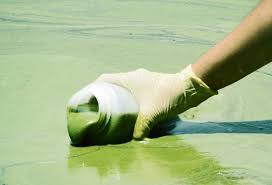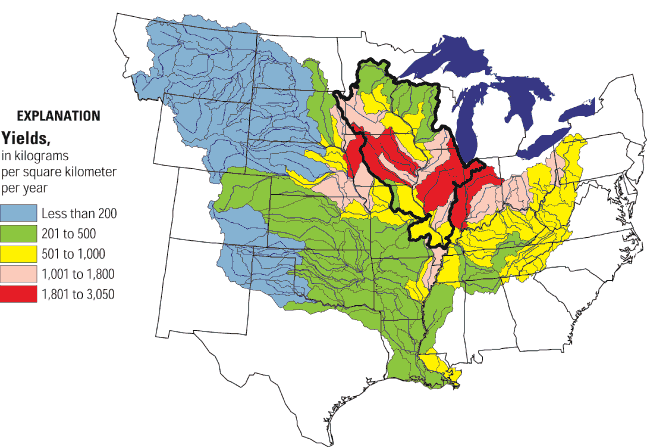 This problem is a focus of the website Circle of Blue. They say, “Expansive blooms of toxic algae are poisoning drinking water, closing beaches, and creating oxygen-deprived aquatic “dead zones” around the globe. Driven by excess amounts of nutrients washing into waterways from expanding agriculture and cities, the blooms represent a growing water quality crisis that could further deteriorate under climate change.” (Circle of Blue) On this website, there are several stories about algal blooms and human health. In 2013, the International Joint Commission for the Great Lakes issued a literature review citing problems that can arise from these algal by-products. (IJC) This scholarly research reports that “… many (blue-green algae blooms) produce toxic secondary metabolites, the cyanotoxins, which can cause serious, acute intoxication in mammals (including humans) affecting the hepatopancreatic, digestive, endocrine, dermal, and nervous systems. This report addresses the objective to assess the human health impacts associated with harmful algal blooms (HABs) especially those associated with blooms of cyanobacteria or blue-green algae (cyanoHABs).” Algae blooms are very common on the Upper Mississippi and its tributaries, which provide drinking water for millions of Americans. Environmental degradation resulting from excessive nutrients is very visible; it is time that we also begin to examine the human health impacts. These impacts have been documented extensively in the Great Lakes region, so we know it can happen here as well. 9/21/2017 04:19:16 am
Rivers and other small bodies of water sustain various living things. In my class, I learned that these bodies of water helped ancient civilization to survive and grow. Just like the ancient city of Egypt, it is established near the Nile River. However, in the modern era, most of the people don't give importance to these bodies of water. Just like the rivers near the urban area, it becomes dirtier and smelly day by day. We should give importance to our natural water system because if we don't they will be gone and it can no longer sustain life anymore. 12/2/2017 02:18:52 am
I have read your article, it is very informative and helpful for me.I admire the valuable information you offer in your articles. Thanks for posting it.. 1/8/2018 03:07:50 am
Nice post! This is a very nice blog that I will definitively come back to more times this year! Thanks for informative post. 2/24/2018 04:44:41 am
I really appreciate the kind of topics you post here. Thanks for sharing us a great information that is actually helpful. Good day! 10/26/2021 12:37:44 pm
Just read your post and would like to thank you for maintaining such a cool blog. 1/23/2023 02:10:44 pm
If you don"t mind proceed with this extraordinary work and I anticipate a greater amount of your magnificent blog entries. Comments are closed.
|
| LWV Upper Mississippi River Region | UMRR blog |

 RSS Feed
RSS Feed